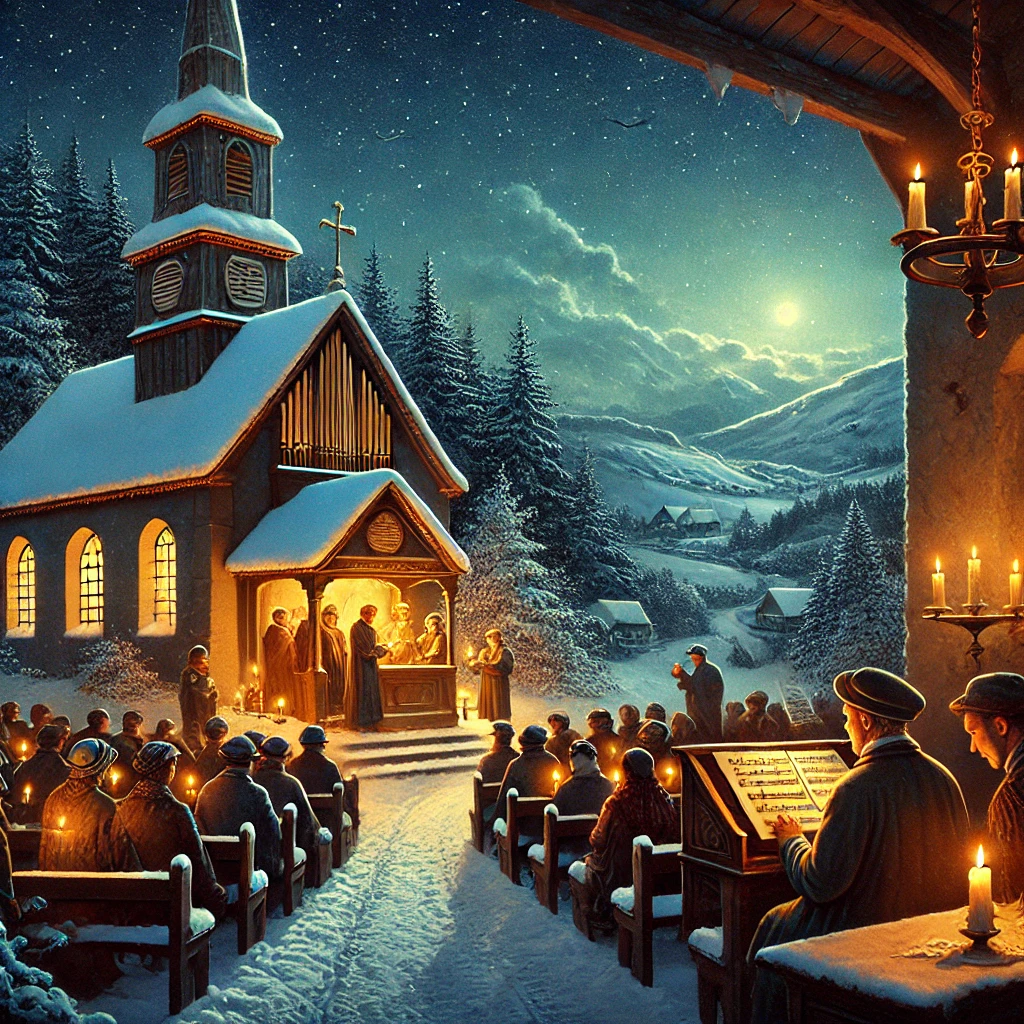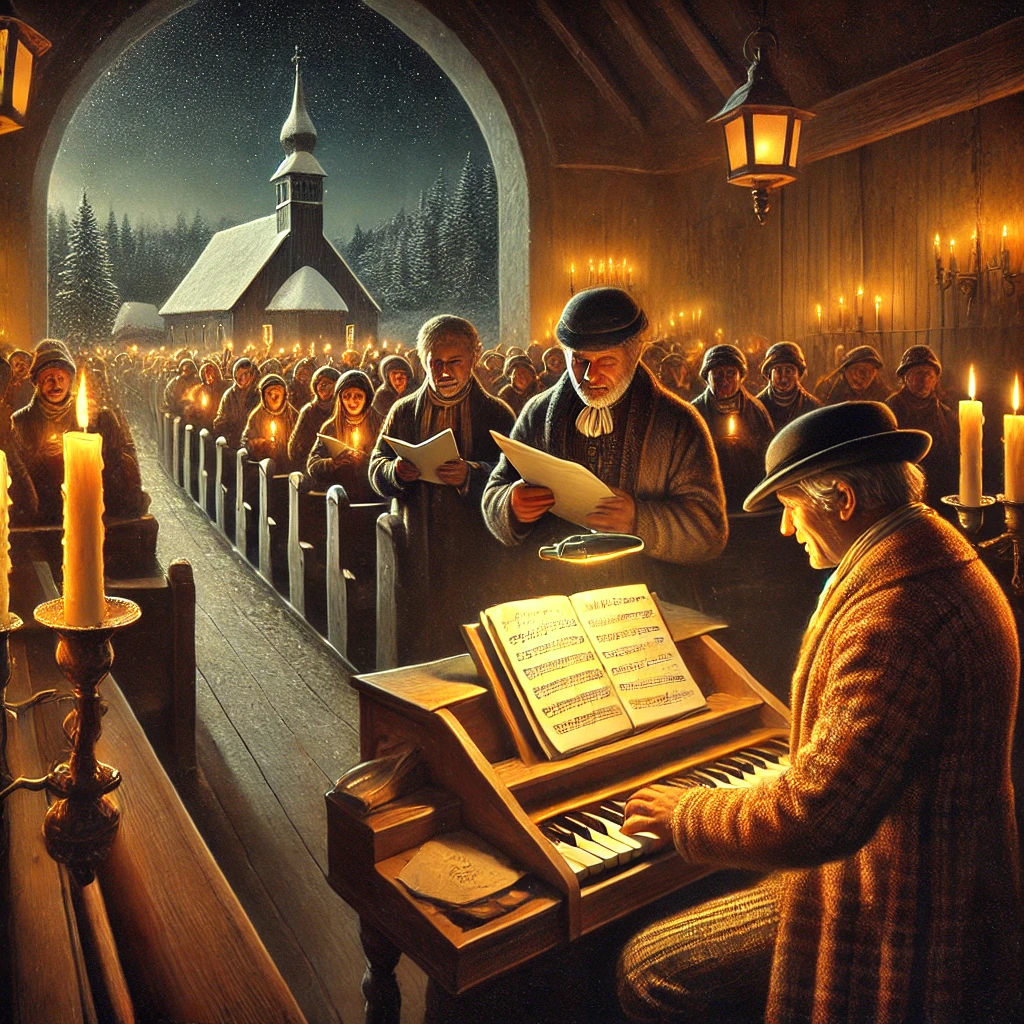On December 24, 1818, in the small Austrian village of Oberndorf, a Christmas carol that would become one of the most beloved hymns in history was performed for the first time. “Silent Night,” with its serene melody and touching lyrics, debuted at St. Nicholas Church during a midnight mass. Composed by Franz Xaver Gruber with lyrics by Joseph Mohr, the song was a response to an urgent need for music on Christmas Eve. Its simple beauty and profound message of peace quickly resonated with listeners, setting the stage for its global recognition.

The Birth of a Christmas Classic
The creation of “Silent Night” arose out of necessity and inspiration. Legend has it that a broken organ at St. Nicholas Church forced Mohr and Gruber to improvise a musical solution for the Christmas service. Mohr, a young priest, had written the lyrics two years earlier, inspired by the peaceful winter landscape and the story of Christ’s birth. On that snowy evening, Gruber, the church organist, composed a melody to accompany Mohr’s poem, and the pair performed it together, accompanied only by a guitar.
The simplicity of the composition—a gentle tune and heartfelt lyrics—helped convey a universal message of hope, love, and peace. Though it began as a solution to a practical problem, “Silent Night” captured the essence of the Christmas spirit in a way that few songs have since.
From Local Hymn to Global Phenomenon

Initially, “Silent Night” was a local treasure, sung in small churches around Austria. Its journey to international acclaim began when traveling folk singers included it in their repertoire. By the mid-19th century, the song had reached Germany and eventually spread across Europe. In 1863, “Silent Night” was translated into English, opening the door to its worldwide popularity.
The carol’s fame grew exponentially during the late 19th and early 20th centuries, solidifying its place in Christmas traditions around the globe. It was even famously sung during the Christmas Truce of 1914 in World War I, when opposing soldiers laid down their arms and joined voices in a moment of shared humanity. This poignant historical moment underscored the song’s universal appeal and its power to unite people across divides.
A Legacy of Peace and Reflection

More than two centuries after its debut, “Silent Night” continues to hold a special place in holiday celebrations worldwide. It has been translated into over 300 languages and dialects, ensuring its timeless message reaches people of all cultures. From grand cathedrals to humble homes, the carol’s soothing melody remains a reminder of the enduring values of peace and goodwill.
The song has also inspired countless renditions by artists ranging from classical choirs to contemporary pop stars. Its adaptability speaks to its universal appeal, while its origins in a small village church remind us of the power of simplicity and sincerity in art.
As families gather each Christmas to celebrate the season, “Silent Night” continues to serve as a soundtrack to moments of reflection and joy. Its legacy is a testament to the enduring power of music to uplift and inspire, transcending time and place to touch hearts across generations.
By reflecting on the humble beginnings and profound impact of “Silent Night,” we are reminded of how even the simplest creations can leave an indelible mark on history. It is a carol that not only celebrates the Christmas story but also embodies the universal longing for peace and harmony—a message that remains as relevant today as it was in 1818.
